It’s generally agreed that 2014 has been a great year for music written across all areas of the soundtrack industry. Music written for film, television and video games have all given us wonderful and varied experiences whether it be from full orchestra, theme-rich compositions from well-known composers to smaller scale ensemble scores or electronic-derived pieces from composers we are less familiar with (or various combinations of the above). As such, it’s been a difficult task whittling down around 400 soundtracks to a nomination list of 10 for each featured category and an even more challenging effort to choose each of the winners.
Each of the winning scores are examples of compositions that have in some way marked them for me as particularly noteworthy. As with last year, each selections is based upon a mix of emotional impact, innovative music and overall listening enjoyment. The lists are a reflection of my own personal taste, on music that has piqued my enthusiasm in a particular way to raise them above a strong pool of other worthy soundtracks.
OVERALL SCORE OF THE YEAR 2014
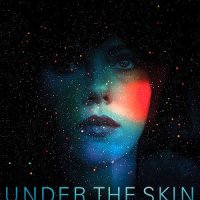 UNDER THE SKIN (Mica Levi)
UNDER THE SKIN (Mica Levi)- Autómata (Zacarías M. de la Riva)
- Il Ragazzo Invisibile (Ezio Bosso & Federico De Robertis)
- Tinker Bell and the Legend of the NeverBeast (Joel McNeely)
- The Unknown Known (Danny Elfman)
Mica Levi’s outstanding score for Jonathan Glaser’s seemingly “love-it-or-hate-it” sci-fi film Under The Skin is a wonderfully crafted score that’s intriguing and hypnotic and the highlight of the year. It’s a spare score, with an ensemble based around strings, and Levi created number of key themes/motifs and additional textures that fits superbly with the tone of the film itself. Bernard Herrmann’s innovative use of a limited musical palette and the atmospheric electronic score for the 1950s sci-fi classic, Forbidden Planet (Louis & Bebe Barron) come to mind in this soundtrack. It’s that good!
BEST SCORE – DRAMA
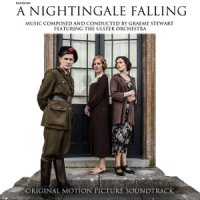 A NIGHTINGALE FALLING (Graeme Stewart)
A NIGHTINGALE FALLING (Graeme Stewart)- Faan se Trein (Nik Sakellarides)
- Field of Lost Shoes (Frederik Wiedmann)
- Fuego (Aritz Villodas)
- Red Krokodil (Alexander Cimini)
Graeme Stewart’s score for Garret Daly & Martina McGlynn’s historical drama A Nightingale Falling, set in Ireland during the War of Independence of 1919-1921 is a beautiful little score and worthy winner of the Drama catergory. Tender woodwind solos are among the highlights of some wonderfully evocative thematic material that’s given a strong outing by The Ulster Orchestra (currently at risk from UK finding cuts*). The overriding emotion is one of sadness reflecting those caught up in the conflict but Stewart’s score turns up the drama when required to give a strong and varied soundtrack.
South African born composer Nik Sakellarides’ score for the character drama, Faan se Trein, chooses a similar route to Stewart, reflecting the conflicts within a small South African community by using a relatively small-scale ensemble and with music centred on a lovely main theme. Frederik Wiedmann gave the American Civil War film Field of Lost Shoes an equally emotional score, but choosing to go much grander and featuring more action scoring. Sweeping strings, patriotic brass and voices are the basis of another strong, thematic score. German-born composer Alexander Cimini chose to infuse Red Krokodil, a film documenting the decline drug addict living in a post-nuclear city, with one of the beautiful themes of the year, focusing on providing the story with feelings of optimism, hope and – ultimately – liberation. Finally, composer Aritz Villodas’ sparse but powerful score for the revenge thriller Fuego uses mainly strings and piano to focus on the destructive consequences of acts of terrorism both for the victims of these acts and for those who are left to deal with its consequences.
The five other scores that make up my Top 10 are: Bi Küçük Eylül Meselesi (Toygar Işıklı), Grace of Monaco (Guillaume Roussel & Christopher Gunning), Guten Tag, Ramón (Rodrigo Flores López), The Imitation Game (Alexandre Desplat) and Une Promesse (Gabriel Yared).
*After the announcement of the Reel Music Award winners it was announced that funding to secure the future of the orchestra has been achieved.
BEST SCORE – ACTION / ADVENTURE / THRILLER
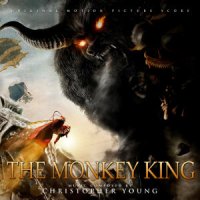 THE MONKEY KING (Christopher Young)
THE MONKEY KING (Christopher Young)- Cold In July (Jeff Grace)
- La Prochaine Fois Je Viserai Le Cœur (Grégoire Hetzel)
- Pompeii (Clinton Shorter)
- Viy (Anton García)
Christopher Young’s score for the Chinese action film The Monkey King takes full advantage of the action and adventure of the original Chinese story, creating a score that is vast in its scope and detailed in its writing. It’s an orchestral thrill ride from start to finish. Unfortunately, Young’s score remains unreleased at the time of writing.
Clinton Shorter’s Pompeii is an excellent powerhouse of a score, full of the adrenaline-fuelled scoring beloved of composers of trailer music. Powerful percussion, massed chorus and strong strings all add up to a fun and exhilarating experience. Spanish composer Anton García’s score for the Russian adventure movie, Viy, is an energetic romp of a score that balances power with dissonance and atmosphere and features a strong performance from the City of Prague Philharmonic Orchestra and Chorus. Grégoire Hetzel’s tormented music for the French thriller La Prochaine Fois Je Viserai Le Cœur is a strong but sparse, strings-based score reflecting the point of view of a serial killer who is also member of the French Gendarmerie. Jeff Grace’s synth-heavy score for Jim Mickle’s crime thriller Cold In July reflects the movie’s setting in the eighties and evokes comparisons with the likes of John Carpenter and Tangerine Dream. Grace’s score is a stylish throwback to the atmospheric scores of the seventies and eighties brought right up to date.
The five other scores that make up my Top 10 are: Götz von Berlichingen (Enis Rotthoff), Into The Storm (Brian Tyler), Need For Speed (Nathan Furst), The Privileged (Jeff Toyne, (with Aiko Fukushima, Blake Ewing & Marcus Sjowall)) and Teenage Mutant Ninja Turtles (Brian Tyler).
BEST SCORE – FANTASY / SCI-FI / HORROR
 UNDER THE SKIN (Mica Levi)
UNDER THE SKIN (Mica Levi)- Autómata (Zacarías M. de la Riva)
- The Hobbit: Battle of the Five Armies (Howard Shore)
- Il Ragazzo Invisibile (Ezio Bosso & Federico De Robertis)
- Maleficent (James Newton Howard)
The best score of 2014, Mica Levi’s compelling score for Under The Skin, tops the best score for its genre. But not far behind it is Zacarías M. de la Riva’s riveting score for Gabe Ibáñez’ post-apocalyptic science fiction thriller, Autómata. Expertly balancing between soaring beautiful strings and voice and tense dissonance, the Spanish composer’s score is sublime and so nearly took top spot in 2014. In a genre that was particularly strong in 2014, James Newton Howard’s Maleficent – a retelling of the Sleeping Beauty fairy tale from the point of view of Angelina Jolie’s Evil Queen – is a rich musical experience with numerous themes, ethereal choral passages and grand action scoring. Howard Shore’s visit to Tolkien’s Middle Earth came to a strong conclusion with his score for The Hobbit: The Battle of the Five Armies, where he brings together all the various themes and motifs from the earlier films of this trilogy and hints at the thematic material composed for the Lord of the Rings films. Finally, Il Ragazzo Invisibile is a fantasy film where an unpopular child suddenly finds that he has become invisible. Correspondingly, the film’s soundtrack changes and becomes much grander. Presented in part as a “Fantasia for Violin and Orchestra”, Italian composers Ezio Bosso & Federico De Robertis’ orchestral score (played by the London Symphony Orchestra) is, in turns, tender and energetic. Beautiful.
The five other scores that make up my Top 10 are: Dracula Untold (Ramin Djawadi), Guardians of The Galaxy (Tyler Bates), Interstellar (Hans Zimmer), Only Lovers Left Alive (Jozef Van Wissem & SQÜRL) and [REC] 4: Apocalypse (Arnau Bataller).
BEST SCORE – COMEDY
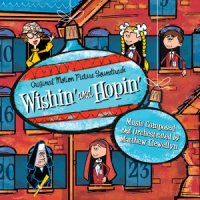 WISHIN’ AND HOPIN’ (Matthew Llewellyn)
WISHIN’ AND HOPIN’ (Matthew Llewellyn)- Jayson Bend: Queen and Country (Matt Carter)
- St. Vincent (Theodore Shapiro)
- Supercondriaque (Klaus Badelt)
- Wish I Was Here (Rob Simonsen)
Matthew Llewellyn’s score for Colin Theys’ holiday season family TV movie, Wishin’ and Hopin’ was my favourite comedy score for 2014 and firmly cements my view of Llewellyn as a gifted and versatile composer and one to watch in the future. Sparkling orchestrations and lively compositions makes for a thoroughly enjoyable listen in a genre where composing music that “works” away from the picture can be notoriously difficult to achieve.
American composer Rob Simonsen’s score for the comedy Wish I Was Here, which looks at how a struggling actor’s life changes when he is forced to educate his two children, is thoroughly engaging (though brief) score mainly for piano and guitar featuring a charming main theme. The use of unusual percussion elements within the context of a light conventional score of strings, guitar and piano is what stand out most about Theodore Shapiro’s St. Vincent. Bill Murray’s Vincent learns a few life lessons when he comes into contact with a 12-year-old boy and Shapiro’s light score expertly underscores this developing relationship. Supercondriaque, a French comedy about a hypochondriac medical photographer, may be an unusual sort of a project for Klaus Badelt but he rose to the occasion delivering an enjoyable and quirky comedic score that has a fair amount of solid Badelt action scoring. The inclusion in Supercondriaque’s story of a Russian freedom fighter allows the composer to add some Eastern European influences (including male choir). Finally, director and composer Matt Carter’s Jayson Bend: Queen and Country gives “Britain’s most famous secret agent a long overdue makeover for the boys” according to one review site. Carter’s own score plays things pretty straight with a solid spy score with required romantic and action cues and with only the ocassional nod to John Barry.
The five other scores that make up my Top 10 are: The Grand Budapest Hotel (Alexandre Desplat), Kamikaze (Manel Santisteban), La Liste de Mes Envies (John Erik Kaada), Laggies (Benjamin Gibbard) and A Million Ways To Die In The West (Joel McNeely).
BEST SCORE – ANIMATION
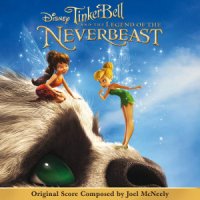 TINKER BELL AND THE LEGEND OF THE NEVERBEAST (Joel McNeely)
TINKER BELL AND THE LEGEND OF THE NEVERBEAST (Joel McNeely)- The Boxcar Children (Kenneth Burgomaster)
- Planes: Fire and Rescue (Mark Mancina)
- Son of Batman (Frederik Wiedmann)
- Tarzan (David Newman)
Joel McNeely’s association with Disney’s Tinker Bell films is a long one and Tinker Bell and the Legend of the NeverBeast, his second Tinker Bell score of 2014, is a highlight score of 2014. McNeely is at the height of his game with this score creating a score full of energetic action sequences, bold percussive moments and tempered emotional thematic material that’s all peppered with contrasting dark passages.
David Newman’s exciting score for a German-made version of the animated film Tarzan was a contender in this genre for most of the year. Adrenaline-fueled action sequences for full orchestra (and some added choir) feature throughout with some additional ethnic percussion to reflect the story’s origin. Frederik Wiedmann’s score for the animated movie, Son of Batman, is also characterised by bold and powerful orchestral scoring, mixing solid thematic material with an undercurrent of oppression. Mark Mancina gave the Disney animated film Planes: Fire and Rescue a thrilling orchestral score with some epic heroic thematic material thrown in to ramp up the level of enjoyment. Finally, Kenneth Burgomaster’s score for the straight-to-video animated film, The Boxcar Children (based on the books of Gertrude Chandler Warner) is a beautiful score that features piano and guitar that has a strong folky character. Evoking feelings of innocent summer days of growing up, Burgomaster’s is full of optimism throughout making for a score that has a high repeat value.
The five other scores than make up my Top 10 are: Big Hero 6 (Henry Jackman), The Book of Life (Gustavo Santaolalla), Minuscule: La Vallee des Fourmis Perdues (Hervé Lavandier), Omoide no Mânî (Takatsugu Muramatsu) and Postman Pat: The Movie (Rupert Gregson-Williams).
BEST SCORE – DOCUMENTARY
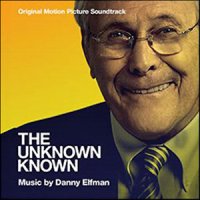 THE UNKNOWN KNOWN (Danny Elfman)
THE UNKNOWN KNOWN (Danny Elfman)- Ballet Boys (Henrik Skram)
- The Final Member (Rob Simonsen)
- Food Chains (Gil Talmi)
- Rise of The Eco-Warriors (Loic Valmy)
Danny Elfman’s score for director Errol Morris’ look at the life and career of former U.S. Secretary of Defense Donald Rumsfeld, The Unknown Known, was the standout documentary score of 2014. Energetic string rhythms are the centre of a score that shows nods to the wonderfully sinuous minimalist scores of Philip Glass, Elfman’s addition of some “trademark” chorus and varied instrumentations all come together for this most excellent work.
Soundtrack record label MovieScore Media were instrumental in releasing two of my top documentary scores of 2014. Henrik Skram’s energetic score for the Norwegian documentary Ballet Boys ably reflects the work ethic of three young ballet dancers, with whirling strings and delicate orchestral passages building into a wonderful musical portrait of the dancers’ endeavours. Rob Simonsen composed a measured and somewhat quirky score for Jonah Bekhor and Zach Math’s The Final Member, a film following the curator of Iceland’s Phallological Museum and his search for the eponymous “final member” to complete the museum’s collection. Delicate pizzicato strings motifs are the basis of a sensitive score that only occasionally hints at the documentary’s unconventional subject matter. In Food Chains, Gil Talmi’s score is ultimately an uplifting score for a documentary spotlighting the plight of the numerous exploited immigrant farm workers. The score focuses on the strength and resolve of the labourers with bright, upbeat rhythms with only the slightest of ethnic colourings (acoustic guitar) rather than dwelling on their harsh conditions. Finally, up-and-coming French composer Loic Valmy’s orchestral score for Cathy Henkel’s eco-documentary, Rise of the Eco-Warriors, combines sweeping strings and wordless vocals with more action-oriented scoring (featuring percussion and brass) to reflect commitment of the group of young people who have travelled to Borneo to help save the rainforests against the constant threat from developers.
The five other scores that make up my Top 10 are: 27 Aprile 2014: Racconto di Un Evento (Franco Eco), Chine: République Populaire de La Corruption (Maximilien Mathevon), Cosmos: A SpaceTime Odyssey (Alan Silvestri), Dinosaur 13 (Matt Morton) and Visitors (Philip Glass).
BEST SCORE – TELEVISION
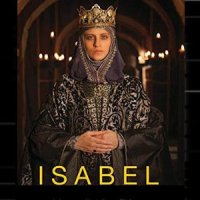 ISABEL (SEASON 3) (Federico Jusid)
ISABEL (SEASON 3) (Federico Jusid)- Alaska: The Last Frontier (Season 4) (Tony Morales)
- Gunshi Kanbee (Yugo Kanno)
- Il Tredicesimo Apostolo: La Rivelazione (Season 2) (Andrea Farri)
- The Mill (Season 2) (Samuel Sim)
Federico Jusid’s music for the second season of Spanish episodic TV drama Isabel topped my list in this genre in 2013 and the overall quality has continued into the show’s third season and this is reflected by Jusid’s music once again topping the Television genre in 2014. Isabel is again packed full of bold and thematic orchestral scoring: dramatic passages calling upon the full force of the orchestra combine with strong choral writing. Powerful stuff written for the small screen that would be welcomed in any multi-million dollar drama film.
Italian composer Andrea Farri’s gave the Italian TV series Il Tredicesimo Apostolo: La Rivelazione a dramatic score echoes some of Jusid’s score with prominent use of strong orchestral scoring supplemented with enthusiastic choral work – to reflect the presence of a Jesuit priest from the “Congregazione della Verità” – but adds an element of contemporary electronics to the mix. Gunshi Kanbee, an historical drama series set in the feudal Japan of the 16th century, received an accomplished orchestral score from Yugo Kanno. A multitude of themes are moulded throughout the drama, building to a score that has a strong emotional base and musical versatility. British composer Samuel Sim gave a conspicuous “voice” to The Mill, a drama series following the struggle of cotton mill workers in 1800s Britain. The score features a wonderfully evocative small string ensemble, relying heavily on string rhythms echoing the machinery used by the workers every day. Bright acoustic guitars and woodwinds are ingeniously added, giving a human aspect to this strong score. Finally, Tony Morales’ vibrant folk-inspired score for the episodic documentary series Alaska: The Last Frontier mixes small-town America traditional-style instrumentation with more contemporary action scoring and strong percussion elements for an exuberant listening experience.
The five other scores that make up my Top 10 are: Da Vinci’s Demons (Season 2) (Bear McCreary), The Leftovers (Season 1) (Max Richter), Penny Dreadful (Season 1) (Abel Korzeniowski), Sherlock (Season 3) (David Arnold & Michael Price) and Tidsrejsen (Season 1) (Flemming Nordkrog).
BEST SCORE – GAME & OTHER INTERACTIVE MEDIA
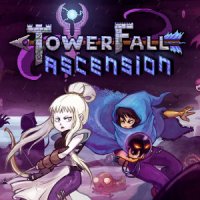 TOWERFALL: ASCENSION (Alec Holowka)
TOWERFALL: ASCENSION (Alec Holowka)- Lords of The Fallen (Knut Avenstroup Haugen)
- Spate (Mike Raznick)
- Trace Vector (Michael Birch)
- War Thunder: Ground Forces (Jeremy Soule, Georgy Zheryakov & Zakhar Antonov)
Video game scoring has become grander and grander over recent years with many big titles having large orchestral scores that would rival most blockbuster movies’ soundtracks. Alec Holowka’s score for the 2D multi-player “archery deathmatch” format Towerfall: Ascension was, for me, the stand-out score of 2014. Featuring a stylish electronic “chiptune” feel, Holowka’s score is an enthusiastic mix of soaring themes and exciting melodies that has an exuberance to maintain the interest of the player when levels are difficult and cues loop over-and-over again.
Trace Vector by Michael Birch (aka Flexstyle) is a pulsing electronic score emulating the sounds of video arcade games of the eighties and nineties; track after track of drum fills and Arp 2600-sounding arpeggios offer an exciting accompaniment to the gameplay and a nostalgic listen. A 50-piece orchestra, a string quintet and additional woodwinds and wordless vocals combine to create an eerie soundtrack for the surreal “steampunk” platform game Spate. Experienced composer Mike Raznick uses intriguing motifs rather than outright themes works well with the sometimes-weird visuals for one of the most arresting experiences of 2014. Action role-playing game Lords of the Fallen gave Norwegian composer Knut Avenstroup Haugen the opportunity to composer a grand and epic score featuring a memorable main theme (which appears in various forms throughout), strong and bold orchestral action scoring and rousing choral flourishes. Finally, War Thunder: Ground Forces saw veteran video game composer Jeremy Soule collaborate with Georgy Zheryakov and Zakhar Antonov to create another bold and aggressive orchestral score featuring wordless chorus. The brass section of the orchestra is given a good workout in the action sequences but it’s the innovative staccato figures – particularly for woodwinds – that are particularly memorable.
The five other scores that make up my Top 10 are: ALONE (Rob Allison), Child of Light (Béatrice Martin), Civilization: Beyond Earth (Griffin Cohen, Michael Curran, Grant Kirkhope & Geoff Knorr), Cloudbuilt (Jacob Lincke) and World of Warplanes (Sergey Khmelevsky & Mikhail Kotov).
BEST SCORE – SHORT FILM
 THE LAST ISLAND (Karol Orzeł)
THE LAST ISLAND (Karol Orzeł)- Ambition (Atanas Valkov)
- The Factory (Piotr Hummel)
- Gunpoint (Matthew Merenda)
- Yellow (Julian Kantus)
Karol Orzeł’s beautiful score for Daniel Zagórski’s short animated film, The Last Island, on Old Masters paintings was, for me a highlight of 2014. Ethereal vocals and synths (ala Brian Eno) combine to create a hypnotic backdrop for the short film and the inclusion of string and woodwind/brass passages add an interesting angle to the score.
Tomek Baginski’s film, Ambition, is a short live-action drama made with in collaboration with the European Space Agency (ESA) and its goal is to raise awareness of the ESA’s recent probe mission to a comet. Atanas Valkov’s score is a heady mix of synth washes, percussive rhythms and a hypnotic ostinato motif bedded together with Hans Zimmer/trailer music sensibilities. Young Polish composer Piotr Hummel combines short motifs and electronic textures rather than focusing on outright themes for the animated short, The Factory. The dexterity of his rhythms and ostinato patterns are of particular note. Matthew Merenda’s score for Gunpoint, James Heller Chapman’s film about a SWAT team’s involvement during a hostage situation, also combines ostinato patterns and bold rhythms in this percussive action-driven soundtrack. Finally, Yellow – a German-language thriller documenting the bizarre experiences of an actress after taking the eponymous drug – features an atmospheric score from German composer and songwriter Julian Kantus. A beautiful main theme on piano is one of the few moments of light in a score that’s an effective portrait of dark, atmospheric and unsettling tones.
BEST SCORE – ARCHIVAL RELEASE
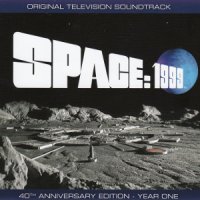 SPACE:1999 (YEAR ONE) (1975) (Barry Gray (with additional composers)) (Fanderson Records)
SPACE:1999 (YEAR ONE) (1975) (Barry Gray (with additional composers)) (Fanderson Records)- Crash (1996) (Howard Shore) (Howe Records)
- Dragon (2013) (Tim Phillips) (Eyeball Music)
- The Pioneers of Movie Music: Sounds of the American Silent Cinema (1912-1928) (Various composers) (New World Records)
- Predator 2 (1990) (Alan Silvestri) (Varese Sarabande CD Club)
Fanderson Records’ 3-CD set of music from the first season of Gerry Anderson’s live action series Space:1999 is a lovingly presented set and, for me, is the best archival release of 2014. Featuring music from every episode from the first season, Barry Gray’s iconic scores have never sounded so good and the set included music found in general music library collections and from the composer’s own archives and has then been included back into the specific episodes. Unfortunately, this release is limited to Fanderson club members.
Howard Shore’s Crash (Howe Records) and Alan Silvestri’s Predator 2 (Varese Sarabande CD Club) are fine examples of two composers at the top of their game and both have received expanded releases in 2014. Both feature additional music adding new dimensions to already-familiar scores with Silvestri’s Predator 2 in particular featuring significant improvements in sound quality. New World Records’ The Pioneers of Movie Music: Sounds of the American Silent Cinema is a wonderfully-produced release focusing on the music composed for the silent films of the early twentieth century. Expertly realised by The Paragon Ragtime Orchestra (dir. Rick Benjamin), this release is an important addition to a currently neglected aspect of the music written for film. Finally, Eyeball Music’s release of Tim Phillips’ 2013 score for Dragon, a theatrical production for The National Theatre of Scotland/Vox Motus and Tianjin People’s Art Theatre of China, features some outstanding music worthy of release. Vibrant string ostinato patterns and swirling woodwinds are a highlight of the score, but more introspective orchestral passages offer a balanced listening experience. A worthwhile archival release.
The five other scores that make up my Top 10 are: It’s A Wonderful Life (1946) (Dimitri Tiomkin) (Kritzerland Records), Jacob (2011) (Iain Kelso) (Howlin’ Wolf Records), The Lamb of God (2000) (Kurt Bestor) (Pinnacle Music), The Matrix Revolutions (2003) (Don Davis) (La-La Land Records) and To The Ends of Time (1996) (Eckart Seeber) (KeepMoving Records).
BEST INDIVIDUAL CUE
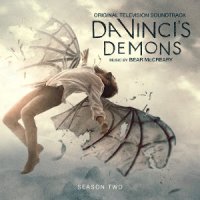 “Florence Under Siege” from DA VINCI’S DEMONS (SEASON 2) (Bear McCreary)
“Florence Under Siege” from DA VINCI’S DEMONS (SEASON 2) (Bear McCreary)- “Countdown” from [REC] 4: Apocalypse (Arnau Bataller)
- “Project 2X” from Velocity 2X (James Marsden & Joris de Man)
- “The Toy Maker” from Castlevania: Lords of Shadow 2 (Óscar Araujo)
- “Yu Huang Da Di, The Jade Emperor” from The Monkey King (Christopher Young)
Bear McCreary’s excellent score for the second season of Da Vinci’s Demons featured in my Top 10 list in the television category but the opening track from Sparks and Shadows’ album, “Florence Under Siege”, takes top honours in this Best Individual Cue 2014 category. The 11-minute track opens with a beautiful solo voice that is joined by a small ensemble of female voices. It’s an arresting opening and focuses the attention for the subsequent 10 minutes of classic Bear McCreary scoring: hypnotic rhythms, pounding percussion and powerful orchestral scoring with innovative solo instrumentation.
“Countdown” is a powerful opening to MovieScore Media’s album release of Arnau Bataller’s score for the horror movie, [REC] 4: Apocalypse. An exciting build up over the course of the cue is elevated to another level with Bataller’s use of a series of bold brass blasts. Óscar Araujo’s “The Toy Maker” from the video game Castlevania: Lords of Shadow 2 delivers an exciting and breathless experience, relentless ostinato patterns being the scaffold over which Araujo hangs epic strings and brass motifs and wonderfully huge choral passages. Christopher Young’s 7-minute epic “Yu Huang Da Di, The Jade Emperor”, from The Monkey King is one of several cues that could have made my final list of top individual cues for 2014. This particular track highlights many of the strong elements of the score as a whole, particularly Young’s expert use of various sections of the orchestra to drive the cue forward in an always-interesting manner. Finally, James Marsden and Joris de Man’s score for the video game Velocity 2X includes the immensely catchy “Project 2X”, a heady mix of futuristic samples, bass, drums and additional percussive rhythms.

One thought on “2014 Reel Music Awards – The Winners”